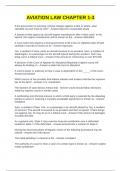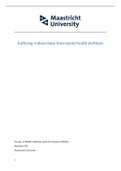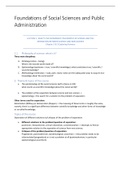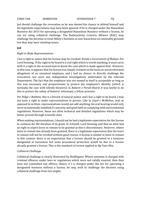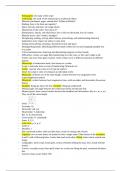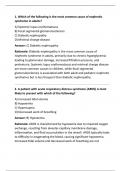Lecture 1:
Sheller and Urry (2016) Mobilizing the new mobilities paradigm:
1. The mobilities paradigm?
A new paradigm may develop within a scientific community when anomalous “facts” arise that do
not make sense within the existing paradigm. A scientific revolution occurs as the old paradigm and
its normal science is challenged by the new paradigm. There will often be prolonged generational
conflict between adherents of the old and new paradigm. Over time the new paradigm may win out
and the scientific community coalesces around its questions and models of doing research within
that field. There is a revolutionary break, after which a new normal science is established within that
community.
2. Theoretical transformations
The new mobilities paradigm seeks the fundamental recasting of social science. First, it involves
examining the constitutive role of movement within the workings of most social institutions and
social practices. Second, work within the new paradigm examines different modes of mobilities and
their complex combinations: physical movement of object; virtual travel often in real-time
transcending distance. Third, these mobilities necessitate distinct exemplars of research to capture
and represent many kinds of movement and related practices and institutions. Fourth, there are
complex assemblies of movements and moorings within these mobility forms. Fifth, this paradigm
emphasizes how social practices can emerge through “unintended consequences” stemming from
how people use, innovate and combine different systems. Finally, the new mobilities paradigm
involves analyzing networks, relations, flows and circulations and not fixed places.
However, the claim here is that the world from 1990 onwards is not simply more mobile than
ever, at least not in the sense of there being an enhanced “freedom of mobility”. Mobilities
moreover are shown to be tracked, controlled, governed, under surveillance and unequal in effect,
partly because of the increasing power of big “mobile” data. The scope of mobility research goes far
beyond physical transportation, to map and follow physical and virtual terrains of interconnected
systems of uneven mobilities and immobilities of many kinds.
The new paradigm draws upon and develops three other theories: complexity theory’s
emergence into social science, socio-technical transitions theory and social practice theory. The
complexity turn within social science dates from the mid 1990’s and explore how the social world is
constituted of complex adaptive systems stretching over time-space. Such systems are both robust
and fragile. So, while systems are stabilized for long periods through lock-ins, small causes can
prompt or tip the emergence of a new path. Complexity theory suggest the need to move away from
business as usual within urban planning and transport planning and the end of the predict and
provide model of transport behavior. It also produces a recognition of the complex
interdependencies of multiple mobility systems.
Second, socio-technical transition theory influenced how mobility transitions have been
imagined and described both in the past and in scenarios of the future. Geels especially highlights the
importance of niches and the different pathways through which they can develop into regimes and
ultimately future landscapes. Innovations struggle with the existing regime but on occasions may
develop as a new regime. Overall, systems innovations are fundamentally social. The new mobilities
paradigm has also challenged transition theory by placing more emphasis on cultural aspects of
change as well as examining wider processes of socio-technical change beyond transportation per se
including mobile communications and securization.
Third, social practice theory focuses on key elements of social practices as well as the
interconnectedness between them. It is argued that social habits and practices, including those


